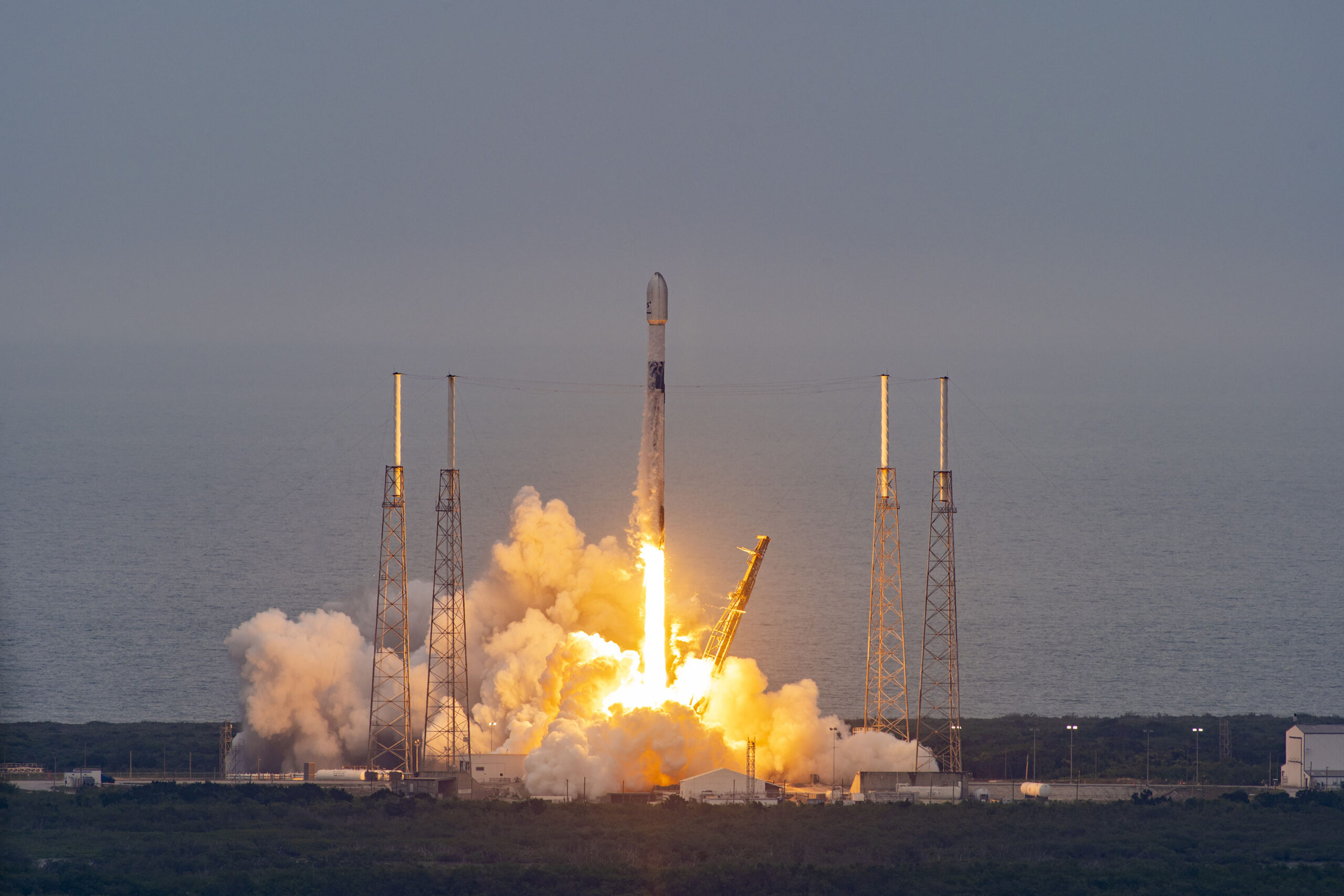TAMPA, Fla. — SpaceX launched a second pair of O3b mPower satellites April 28 for SES, which is now just one launch away from bringing its next-generation broadband constellation in medium Earth orbit (MEO) online.
The satellites lifted off at 6:12 p.m. Eastern on a Falcon 9 from Cape Canaveral Space Force Station, Florida, after clearing threats of poor weather that delayed a SpaceX Falcon Heavy launch at the Cape yesterday.
The Falcon 9’s first-stage booster, which had previously supported a crewed flight to the International Space Station, also successfully landed on a drone ship in the Atlantic Ocean shortly following the launch for reuse.
SES confirmed it successfully made contact with both satellites post-launch. It will now take several more months for the two satellites to independently reach their final positions in MEO by using their onboard all-electric propulsion.
The first pair of O3b mPower satellites that SpaceX launched Dec. 16 have since reached their target positions, according to SES, although they still need to complete health checks before entering service.
There are 11 Boeing-built satellites in the initial O3b mPower system, all with SpaceX launch contracts, but SES said it needs just six to start providing services that promise 10 times more throughput than its current MEO constellation.
SpaceX is slated to launch another pair of satellites before the end of June, which would keep SES on track to begin commercial O3b mPower services in the third quarter of this year.
Each O3b mPower satellite is designed to scale from tens of megabits per second of throughput to multiple gigabits per second, roughly 10 times more than its first generation of 20 O3b satellites in MEO.
Customers that have signed up for O3b mPower so far include cloud provider Microsoft, cruise operator Princess Cruises, and telcos Claro Brasil, Vodafone Cook Islands, CNT Ecuador, and Orange of France.
The government of Luxembourg, where SES is based, announced plans in February to acquire capacity from O3b mPower in a 10-year deal valued at 195 million euros ($215 million), subject to parliamentary approval.
Weather forecasts had at one point projected just a 20% chance of good conditions for SpaceX’s April 28 O3b mPower launch.
SpaceX was due to make another attempt at launching ViaSat-3 with a Falcon Heavy from a nearby launchpad at NASA’s Kennedy Space Center at 8:26 p.m. Eastern April 28, at the end of a 57-minute window, but aborted the launch at T-minus 59 seconds for reasons it did not disclose.
SpaceX said its next launch opportunity for this mission is April 29 at 8:26 p.m. Eastern. The mission also includes two rideshare payloads: a communications cubesat from Washington-based Gravity Space and the first broadband satellite built by Astranis of California.
